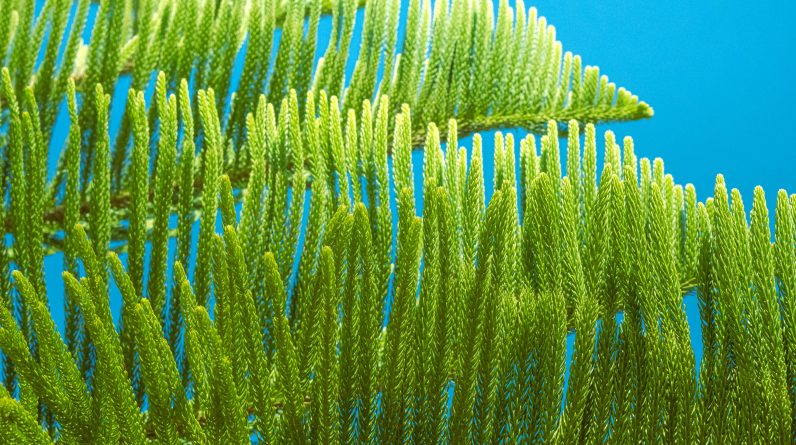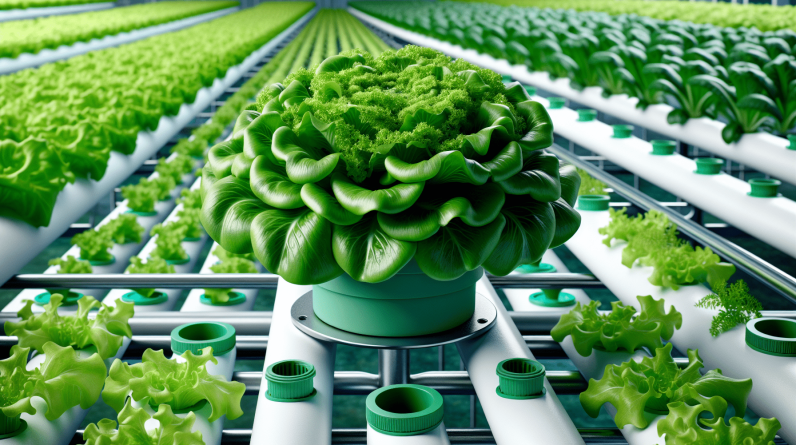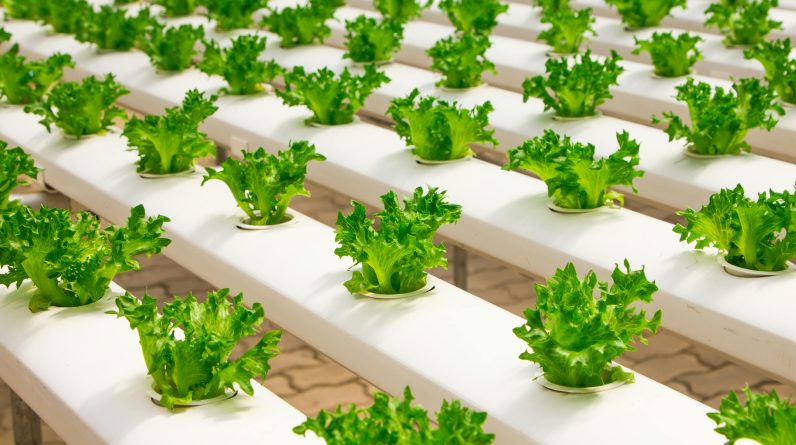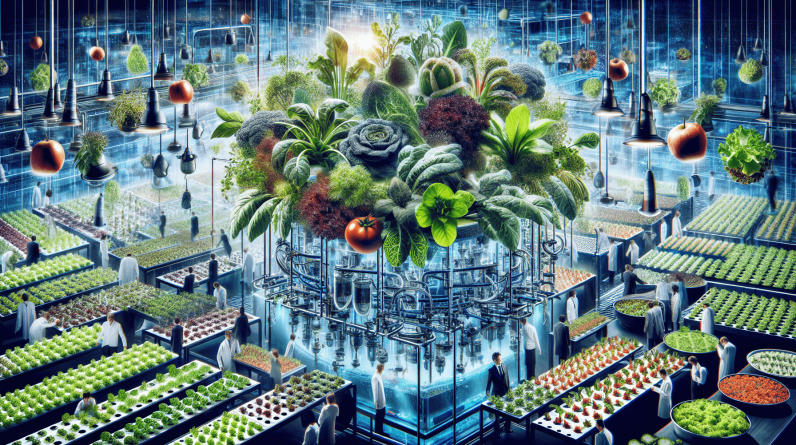
Welcome to a world of gardening innovation with hydroponic systems! By providing plants with direct access to a nutrient-rich solution, these soilless growing systems not only speed up plant growth but also maximize yields. With up to 90% less water usage compared to traditional soil gardening and the ability to cultivate all year round, hydroponic systems are a sustainable and efficient choice for growing fresh, healthy produce. Say goodbye to soil-borne diseases and pests, and hello to a bountiful harvest with hydroponics! Have you ever wondered how you can maximize your yield when growing plants using hydroponic systems? If so, you’re in the right place! Hydroponic growing has gained popularity in recent years due to its ability to produce higher yields in a more controlled environment. In this article, we will explore various methods and techniques to help you get the most out of your hydroponic system. Let’s dive in!
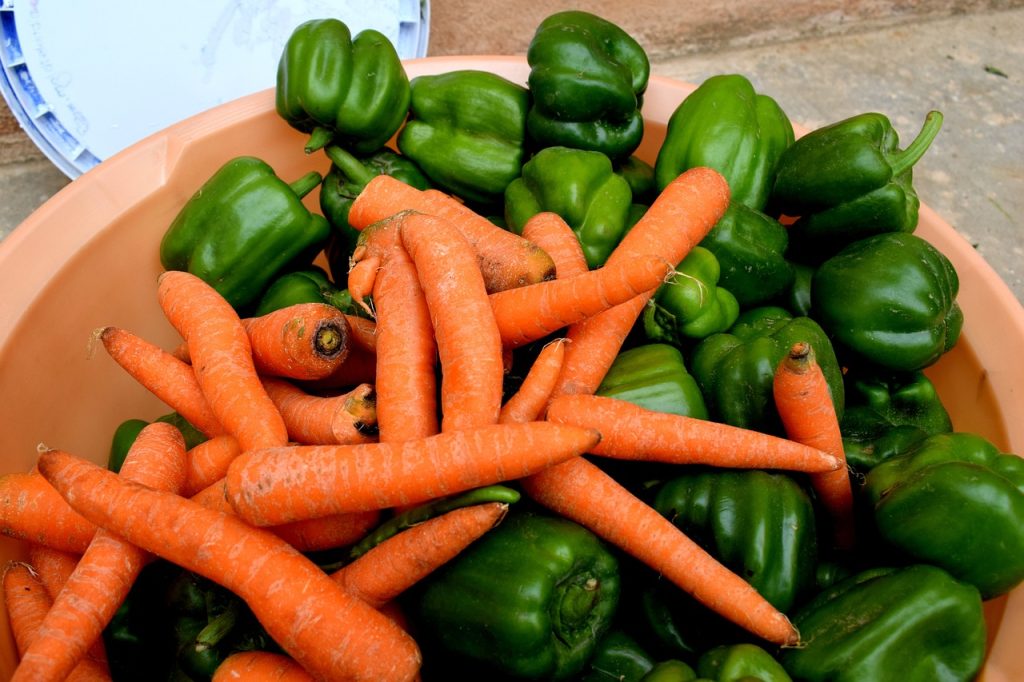
Understanding the Basics of Hydroponic Systems
Hydroponic systems are a method of growing plants without soil, instead using a nutrient-rich water solution to deliver essential nutrients directly to the plant’s roots. This allows for faster growth rates and higher yields compared to traditional soil gardening. By eliminating the need for soil, plants can focus their energy on growth and produce more efficiently.
The Key Components of a Hydroponic System
When setting up a hydroponic system, there are several key components that you will need to consider. These include:
-
Reservoir: The reservoir holds the nutrient solution that will be delivered to the plants. It should be large enough to accommodate your plants and allow for proper circulation of the solution.
-
Growth Medium: The growth medium supports the plants and holds the roots in place while allowing for adequate drainage. Common options include rockwool, perlite, clay pellets, or coconut coir.
-
Pump and Tubing: The pump circulates the nutrient solution from the reservoir to the plants, ensuring that they receive a steady supply of essential nutrients. Tubing connects the pump to the plant containers.
-
Grow Lights: In indoor hydroponic systems, grow lights are essential to provide the plants with the necessary light for photosynthesis. LED grow lights are energy-efficient and provide the full spectrum of light that plants need.
-
pH and EC Meters: Monitoring the pH and electrical conductivity (EC) of the nutrient solution is crucial for ensuring that plants receive the right balance of nutrients. pH levels should be kept between 5.5 and 6.5 for most plants.
Choosing the Right Hydroponic System for Your Needs
There are several types of hydroponic systems available, each with its own advantages and disadvantages. The key is to choose the system that best fits your growing goals and space constraints. Some common types of hydroponic systems include:
-
Deep Water Culture (DWC): In a DWC system, plants are suspended in a nutrient solution with their roots submerged. This system is easy to set up and maintain, making it ideal for beginners.
-
Nutrient Film Technique (NFT): NFT systems use a constant flow of nutrient solution to deliver essential nutrients to the plants’ roots. This system is best suited for leafy greens and herbs.
-
Ebb and Flow: In an ebb and flow system, plants are periodically flooded with nutrient solution before draining back into the reservoir. This system is versatile and can be used for a wide range of plants.
-
Drip System: Drip systems deliver a slow and steady supply of nutrient solution directly to the plant’s roots through a network of tubing and emitters. This system is highly customizable and suitable for larger plants.
By understanding the basics of hydroponic systems and choosing the right system for your needs, you can set yourself up for success in maximizing your yield.
Maximizing Growth Potential with Proper Nutrient Management
Proper nutrient management is crucial for maximizing the growth potential of your plants in a hydroponic system. Unlike in traditional soil gardening, where plants can access nutrients from the soil, hydroponic plants rely entirely on the nutrient solution you provide. Maintaining a balanced nutrient solution is key to ensuring healthy growth and abundant yields.
Understanding Essential Nutrients for Plant Growth
Plants require several essential nutrients to grow and flourish. These include:
-
Nitrogen (N): Nitrogen is essential for plant growth and is a key component of amino acids, proteins, and chlorophyll.
-
Phosphorus (P): Phosphorus plays a vital role in photosynthesis, energy transfer, and root development.
-
Potassium (K): Potassium is crucial for enzyme activation, water uptake, and overall plant health.
-
Calcium (Ca): Calcium helps strengthen cell walls and regulate nutrient uptake.
-
Magnesium (Mg): Magnesium is essential for photosynthesis and overall plant metabolism.
-
Sulfur (S): Sulfur is a component of amino acids and proteins and plays a role in enzyme activation.
Balancing pH Levels in the Nutrient Solution
Maintaining the proper pH level in the nutrient solution is essential for nutrient uptake and overall plant health. Most plants prefer a slightly acidic pH range of 5.5 to 6.5. Monitoring and adjusting the pH regularly will help prevent nutrient deficiencies and ensure optimal growth.
Monitoring and Adjusting the EC Levels
Electrical conductivity (EC) measures the nutrient concentration in the solution. By monitoring and adjusting the EC levels, you can ensure that plants receive the right balance of essential nutrients without risking nutrient burn. Keeping the EC levels within the recommended range for each plant type is crucial for maximizing growth potential.
Providing Secondary and Micronutrients
In addition to the essential macronutrients mentioned earlier, plants also require secondary nutrients (calcium, magnesium, and sulfur) and micronutrients (iron, zinc, manganese, copper, boron, and molybdenum) for healthy growth. Providing a balanced mix of these nutrients in the nutrient solution will help ensure that plants have everything they need to thrive.
By understanding the essential nutrients for plant growth, balancing pH levels, monitoring and adjusting EC levels, and providing secondary and micronutrients, you can effectively manage nutrients in your hydroponic system and maximize the growth potential of your plants.

Enhancing Yield through Proper Lighting Techniques
Light is an essential factor in plant growth and development, playing a crucial role in photosynthesis. In a hydroponic system, providing the right amount and quality of light is essential for maximizing yield and overall plant health. By understanding proper lighting techniques, you can enhance the growth and productivity of your plants.
Choosing the Right Grow Lights for Your Hydroponic System
When it comes to grow lights for hydroponic systems, there are several options to choose from, including:
-
LED Grow Lights: LED grow lights are energy-efficient, produce less heat, and provide a full spectrum of light that plants need for photosynthesis. They are ideal for indoor hydroponic systems and can be customized to meet the specific light requirements of different plant types.
-
Fluorescent Grow Lights: Fluorescent grow lights are affordable, easy to install, and emit a cool spectrum of light that is suitable for seedlings and leafy greens. They are not as energy-efficient as LED lights but are a good option for beginners.
-
High-Intensity Discharge (HID) Lights: HID lights, including metal halide (MH) and high-pressure sodium (HPS) lights, are powerful light sources that provide high levels of light intensity. They are best suited for larger plants and commercial hydroponic operations.
Understanding Light Intensity, Duration, and Spectrum
Light intensity, duration, and spectrum are crucial factors to consider when growing plants in a hydroponic system. By optimizing these factors, you can ensure that plants receive the right amount and quality of light for healthy growth and maximum yield.
-
Light Intensity: Light intensity refers to the brightness of the light source and is measured in foot-candles or lux. Different plants have varying light intensity requirements, so it’s important to match the light intensity to the specific needs of your plants.
-
Light Duration: Light duration, or photoperiod, refers to the number of hours of light exposure that plants receive each day. Most plants require 12 to 16 hours of light per day for healthy growth. Using a timer to control the light cycle will help you maintain consistent lighting conditions for your plants.
-
Light Spectrum: Light spectrum refers to the range of wavelengths emitted by the light source and plays a crucial role in photosynthesis. Different plant types require specific light spectrums for optimal growth. LED grow lights can be customized to provide the right spectrum for your plants’ needs.
By choosing the right grow lights for your hydroponic system, understanding light intensity, duration, and spectrum, and optimizing these factors for your plants, you can enhance yield and promote healthy growth in your hydroponic garden.
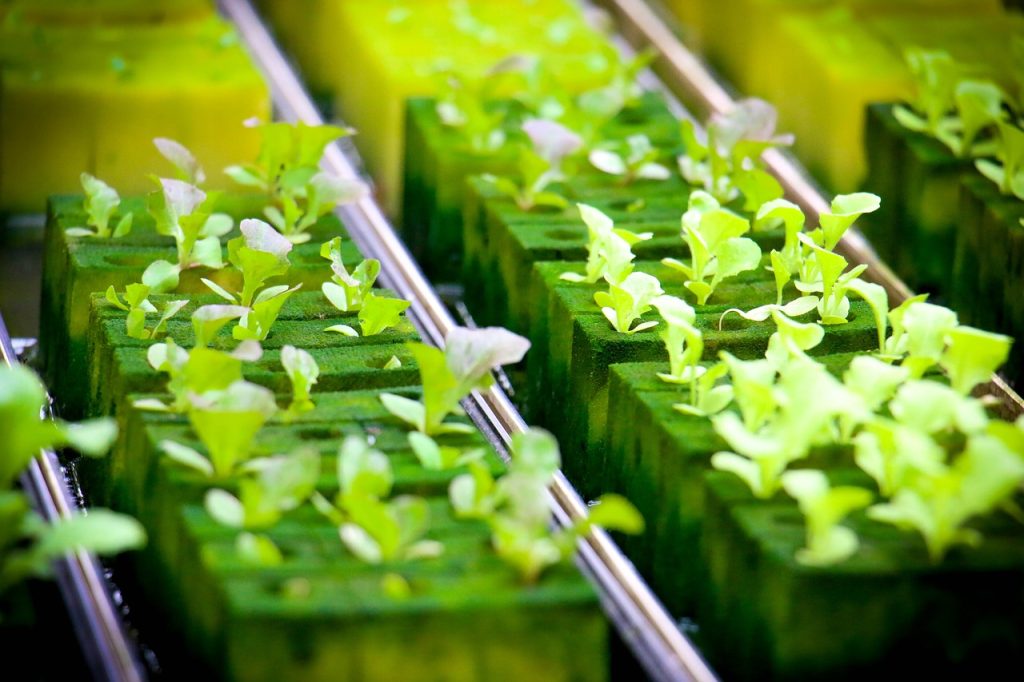
Implementing Proper Maintenance and Monitoring Practices
Proper maintenance and monitoring practices are essential for the success of your hydroponic system. By taking care of your system and regularly monitoring key parameters, you can ensure optimal plant growth, maximize yield, and prevent potential issues from arising.
Regularly Inspecting and Cleaning Components
Regularly inspecting and cleaning the components of your hydroponic system is crucial for preventing nutrient buildup, algae growth, and clogs. Make sure to clean the reservoir, tubing, pump, and grow lights regularly to ensure that your plants receive a clean and healthy environment to grow in.
Monitoring pH and EC Levels
Monitoring pH and EC levels in the nutrient solution is essential for ensuring that plants receive the right balance of nutrients. Use pH and EC meters to measure these levels regularly and make adjustments as needed to maintain optimal growing conditions for your plants.
Checking for Signs of Nutrient Deficiency or Imbalance
Keep an eye out for signs of nutrient deficiency or imbalance in your plants, such as yellowing leaves, stunted growth, or nutrient burn. By identifying and addressing these issues early on, you can prevent them from impacting your overall yield and plant health.
Maintaining Proper Air Circulation and Temperature
Proper air circulation and temperature control are essential for healthy plant growth in a hydroponic system. Make sure that your grow room is well-ventilated, and maintain a consistent temperature range of 65 to 75°F for most plants. Installing fans or ventilation systems can help improve air circulation and prevent issues such as mold or root rot.
By implementing proper maintenance and monitoring practices, you can ensure the long-term success of your hydroponic system, maximize yield, and enjoy a bountiful harvest of fresh, nutritious produce year-round.
In conclusion, maximizing yield with hydroponic systems is not only possible but also highly rewarding. By understanding the basics of hydroponic systems, managing nutrients effectively, optimizing lighting techniques, and implementing proper maintenance and monitoring practices, you can create a thriving hydroponic garden that produces abundant yields of fresh, healthy crops. Whether you’re a beginner or an experienced grower, incorporating these strategies will help you achieve success in your hydroponic growing endeavors. Happy growing!






